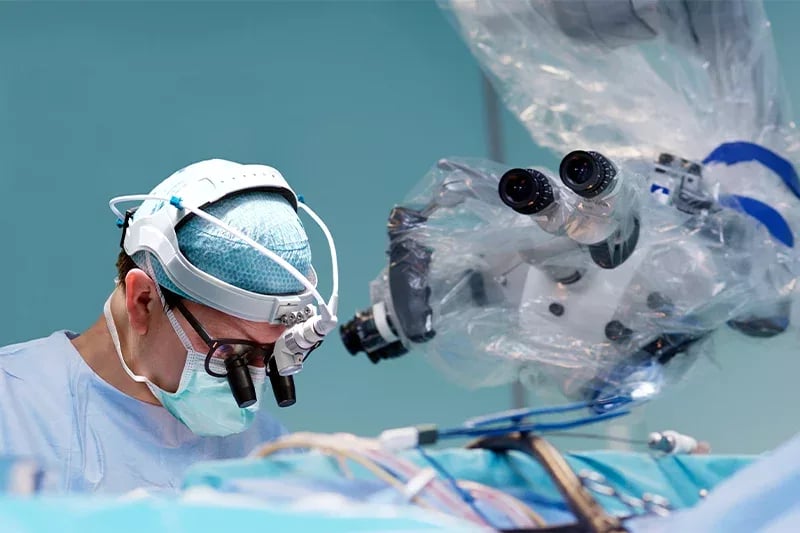News
Green Health Revolution: A Dialogue with Christina Berthon Kirkegaard on Sustainable Healthcare

As we eagerly anticipate the ECHAlliance Digital Health & Wellness Summit, part of the 4YFN Digital Health Programme, we wanted to dive deeper into one of our hottest summit themes: Green Health.
In this interview, we had the opportunity to connect with Christina Berthon Kirkegaard, the Project Manager for Green Transition at Region Southern Denmark, one of ECHAlliance members and ecosystems. Christina, who will be a speaker at the Summit in Barcelona, is set to share her insights during the session titled 'Green Health: Leading the Change - Pioneers of Sustainable Healthcare' on 28 February 2024 (view session).
She discusses her perspectives on the significant opportunities and challenges in steering digital healthcare systems towards sustainability on a global scale.

In your vision, what are the biggest opportunities and challenges for catalysing change towards sustainable digital healthcare systems globally? How do you feel your work can contribute to solving the challenges?
Digital health services can contribute to the reduction of consumption in and outside hospitals. Restructuring of the treatment course and health services for digital solutions, such as video consultations, home monitoring and artificial intelligence, can create value for both patients, staff and not least the climate. We must solve tasks smarter, so that employees have more time for those close to the patient's tasks.
We must, among other things, use digital solutions to improve efficient workflow and reduce administrative processes. Digital solutions such as telemedicine and home treatment can also support citizens in staying more self-reliant in their own home at the same time that it can help to reduce transportation. And digital systems can support medication administration and dosing, which can reduce waste and ensure patients receive the right amount of medicine. Furthermore, digitization can support energy efficiency and intelligent energy consumption in the regions' buildings.
What was the key issue that allowed the region of Southern Denmark to put sustainable healthcare on the agenda?
The healthcare system accounts for around 6% of Denmark's consumption-based climate footprint, of which hospitals are the primary emitter. It has almost doubled since 1990, when the healthcare system was 3.5%.The regions will break the negative cycle and adapt the healthcare system to a greater degree by being circular and with a neutral climate footprint. For healthcare professionals treatment must not worsen people – or the planets – health.
Fortunately, the synergy between climate and public health does not only present challenges, but also opportunities. An improvement in public health in the form of prevention can help reduce activity in the healthcare system and thus its climate footprint.
What do you think the other regions can learn from Southern Denmark about sustainable healthcare?
A successful green transformation of the hospitals and other regional institutions requires that the total traction force in the system is being activated and that it´s extensive and complex development tasks are distributed and coordinated between the regions. This major task is in a new strategy being tackled in all of Denmark by basing it on the Region Southern Denmark's way of structuring the work with the green transition. This happens by the individual regions becoming lead on selected areas. A lead area is characterized by having great development and innovation potential in relation to reducing CO2 emissions within concrete specializations or operational areas, just as a lead area often will involve external partners.
A lead region takes the lead and collects relevant knowledge, investigates possibilities and barriers in the area and is the prime mover to develop and test solutions with a view to subsequently spreading the solutions to all regions, if they prove to have a positive climate effect. The lead region is also responsible for ongoing knowledge sharing with the others regions and involvement where it makes sense. The lead region undertakes to provide an annual status for the lead area.
The development period is typically longer, e.g. 1-2 years, and will be completed in that the lead region can document the project's possibilities and describe potentials for proliferation. The other regions commit themselves at the same time to decide how they have the opportunity to implement the experiences from a region's lead area. Several regions can join together for a lead area in the same way as concrete actions within a lead area can take place in several regions. Furthermore, the lead organization does not stand in the way of regions taking actions in areas where they are not lead.
After the first year of the strategy, the regions relate to the experiences of across the first lead areas. In the long term, the regions take together annually position for initiation of new lead areas. The approach with lead areas must contribute to the resources and competences, which are in the regions, are utilized as best as possible.
Christna will be speaking at the panel on “Green Health: Leading the change: pioneers of sustainable healthcare” At the Digital Health & Wellness Summit on 28 February 2024 at 4YFN.
Explore further about the event here.
The 11th edition of the Digital Health & Wellness Summit at 4YFN24 is co-organised by ECHAlliance – The Global Health Connector.